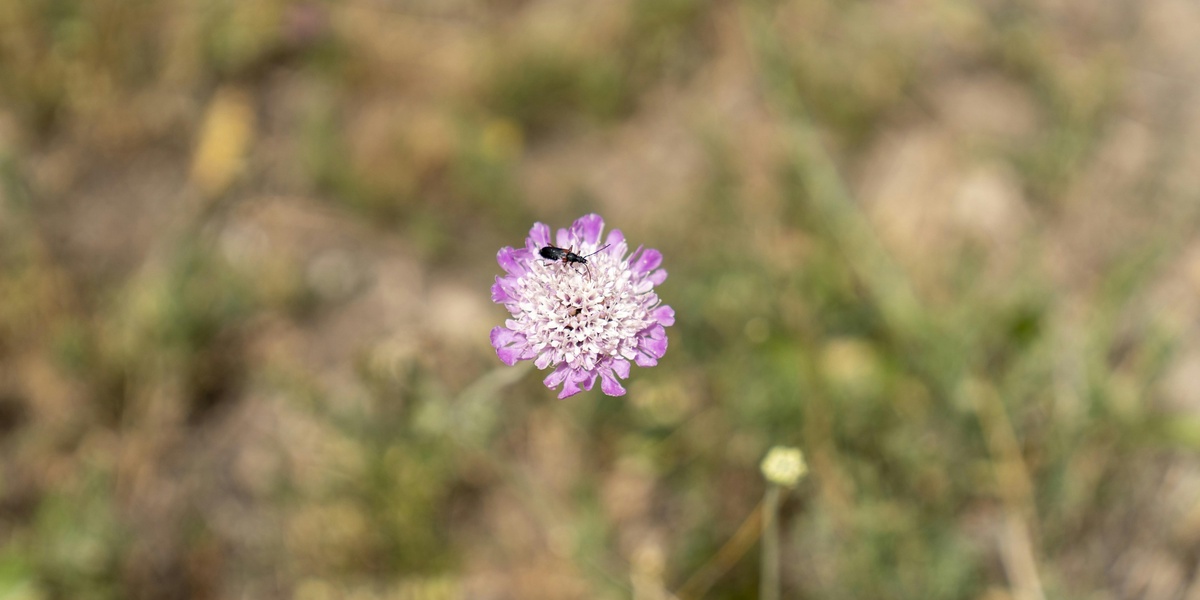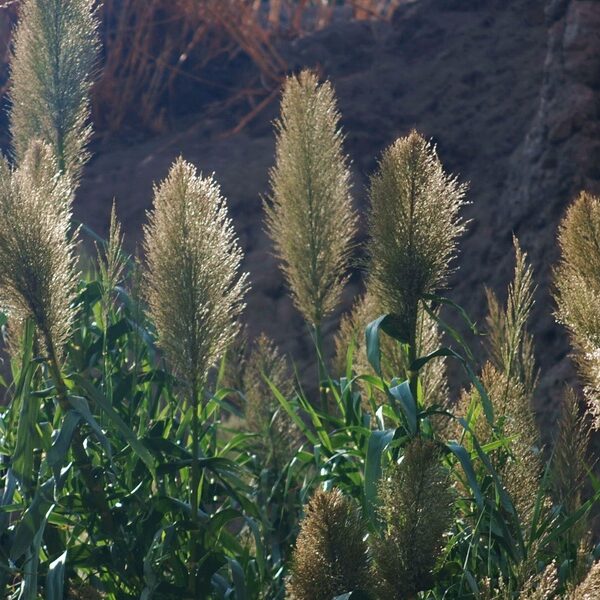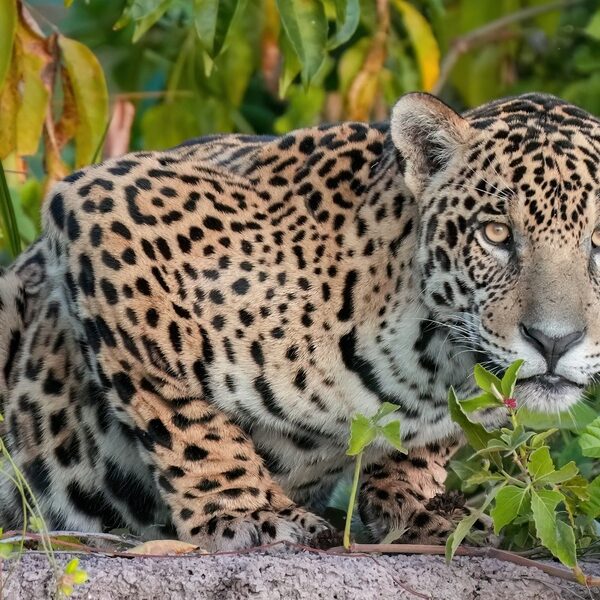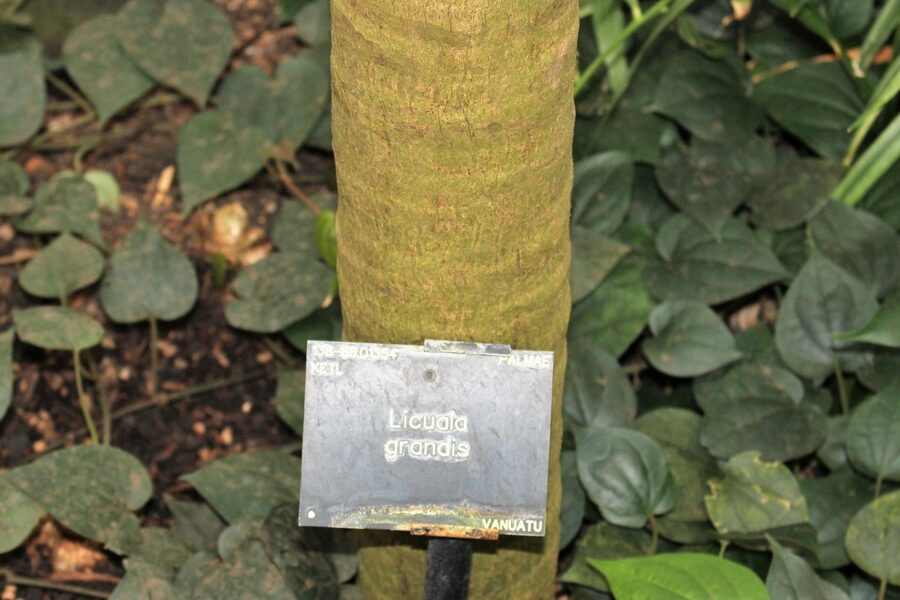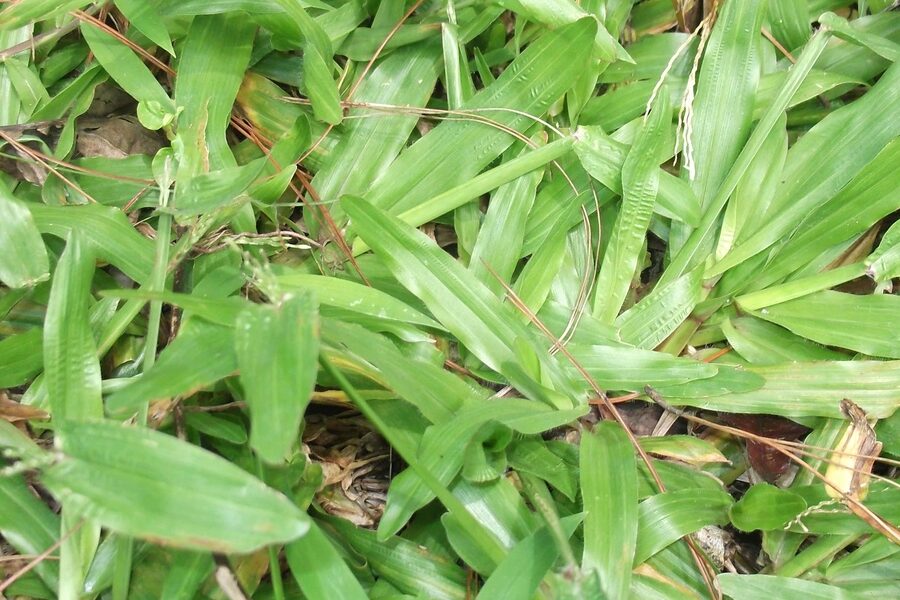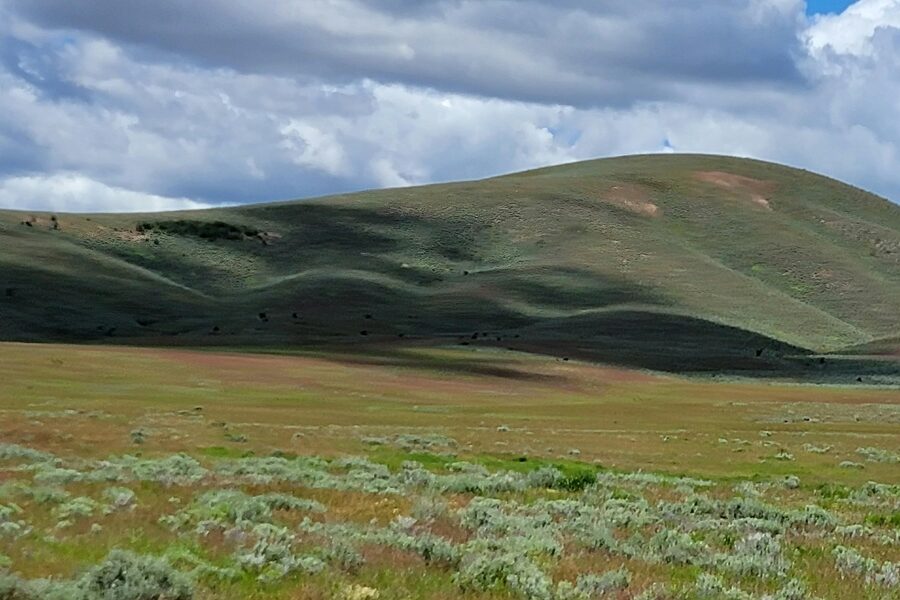Tajikistan’s high plateaus, deep valleys and rugged peaks support a wide mix of alpine and lowland plants shaped by sharp elevation and seasonal contrasts. Many species are most visible along mountain trails, riverbanks and summer pastures where locals and visitors notice changing colors with the seasons.
There are 40 Flowers of Tajikistan, ranging from Altai Globeflower to Yellowish Edelweiss; for each you’ll find below Scientific name,Habitat / Region,Bloom season.
When is the best time to see wildflowers across Tajikistan?
Most species bloom from late spring through mid-summer, with valley and lowland flowers appearing earlier and alpine species peaking in July–August; check the Bloom season column below for exact timing by species.
How can I use this list to plan a trip or identify plants?
Use the Scientific name to confirm identifications in guides, the Habitat / Region to choose where to go, and Bloom season to pick the right months; combine that with a local guide or field guide and respect protected areas and seasonal grazing patterns.
Flowers of Tajikistan
| Name | Scientific name | Habitat / Region | Bloom season |
|---|---|---|---|
| Fire Tulip | Tulipa praestans | Fann Mountains, rocky slopes, juniper woodlands. | April to May |
| Greig’s Tulip | Tulipa greigii | Western Tajikistan foothills, clay and stony slopes. | April to May |
| Foster’s Tulip | Tulipa fosteriana | Foothills of the Pamir-Alai range. | April to May |
| Vicar’s Iris | Iris vicaria | Foothills and mid-mountain slopes, often on scree. | March to May |
| Willmott’s Iris | Iris willmottiana | Mountain slopes and meadows in western Tajikistan. | April to June |
| Crown Imperial | Fritillaria eduardii | Mid-altitude mountain slopes, among shrubs and on scree. | April to June |
| Korolkow’s Crocus | Crocus korolkowii | Foothills and mountain valleys, often near melting snow. | February to April |
| Giant Foxtail Lily | Eremurus robustus | Foothills and steppe zones on dry, rocky slopes. | May to June |
| Prickly Thrift | Acantholimon albertii | Dry, rocky mountain slopes and high-altitude steppe. | June to August |
| Pamir Columbine | Paraquilegia anemonoides | High-altitude rock crevices and scree in the Pamirs. | June to August |
| Snowball Plant | Saussurea gnaphalodes | High-altitude scree slopes of the Pamirs, above 4,000 m. | July to August |
| Drumstick Primrose | Primula capitata subsp. sphaerocephala | Moist alpine meadows and stream banks. | July to August |
| Bonnet Bellflower | Codonopsis clematidea | Mountain meadows, riverbanks, and forest edges. | June to August |
| Burning Bush | Dictamnus albus | Dry, rocky slopes and open woodlands in lower mountains. | May to July |
| Ledebour’s Corydalis | Corydalis ledebouriana | Foothills and mountain slopes, often under shrubs. | March to May |
| Pamir Anemone | Anemone tschernjaewii | Grassy slopes and subalpine meadows in the Pamir-Alai. | April to June |
| Arctic Poppy | Papaver nudicaule | High-altitude scree, tundra, and rocky slopes. | June to August |
| Mountain Larkspur | Delphinium oreophilum | Alpine and subalpine meadows, stony slopes. | July to August |
| Kokan Rose | Rosa kokanica | Dry mountain slopes and river valleys. | May to July |
| Coinleaf Honeysuckle | Lonicera nummulariifolia | Mountain slopes, often among rocks and shrubs. | May to June |
| Olivier’s Gentian | Gentiana olivieri | Steppes, dry meadows, and foothills. | April to June |
| Olga’s Lousewort | Pedicularis olgae | Subalpine meadows and grassy slopes. | June to August |
| Immaculate Skullcap | Scutellaria immaculata | Rocky slopes and scree in the mountains. | June to August |
| Naked-stemmed Hollyhock | Alcea nudiflora | Dry slopes, roadsides, and river valleys. | June to September |
| Giant Fennel | Ferula jaeschkeana | Mountain slopes and foothills. | May to July |
| Thomson’s Leopard Plant | Ligularia thomsonii | Wet meadows, stream banks, and damp areas in the mountains. | July to August |
| Toothed Rhodiola | Rhodiola heterodonta | High-altitude rocky slopes and alpine meadows. | June to August |
| Persian Shallot | Allium stipitatum | Foothills and mountain slopes. | May to June |
| Two-coloured Golden Drops | Onosma dichroanthum | Dry, stony slopes and scree in mid-altitudes. | May to July |
| Tien Shan Pheasant’s Eye | Adonis tianschanica | Alpine meadows and slopes, often near melting snow. | May to July |
| Yellowish Edelweiss | Leontopodium ochroleucum | High-altitude steppes and rocky slopes. | July to August |
| Olga’s Incarvillea | Incarvillea olgae | Dry, rocky slopes and scree in the western Pamir-Alai. | June to July |
| Elegant Horned Poppy | Glaucium elegans | Dry foothills, gravelly plains, and semi-desert areas. | April to June |
| Siberian Lily | Ixiolirion tataricum | Steppes, semi-deserts, and dry foothills. | April to June |
| Pamir Dionysia | Dionysia involucrata | Shaded rock crevices and cliff faces in the Pamirs. | May to June |
| Clary Sage | Salvia sclarea | Dry, stony slopes and disturbed ground. | June to August |
| Regel’s Geranium | Geranium regelii | Subalpine and alpine meadows, often in damp soil. | June to August |
| Altai Globeflower | Trollius altaicus | Wet subalpine meadows and stream banks. | June to July |
| Intermediate Peony | Paeonia intermedia | Grassy slopes and open woodlands in the mountains. | May to June |
| Maximowicz’s Rhubarb | Rheum maximowiczii | Stony slopes and scree in the mountains. | May to June |
Images and Descriptions
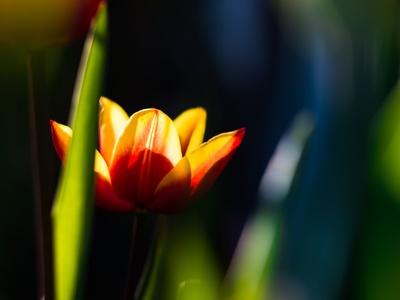
Fire Tulip
A vibrant scarlet tulip famous for producing multiple flowers per stem. Look for it on stony slopes in the Fann Mountains. Its brilliant color makes it a favorite for photographers, but it should not be picked as some populations are threatened.
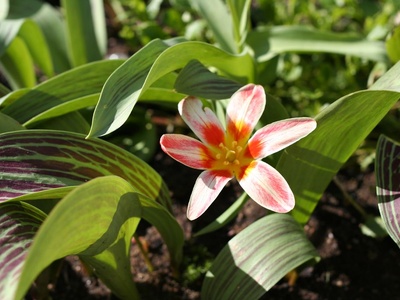
Greig’s Tulip
Known for its enormous, bowl-shaped scarlet flowers and distinctive mottled or striped leaves. This spectacular tulip is a key ancestor of many modern garden hybrids. It often grows in large, impressive colonies, creating a carpet of red on hillsides in spring.
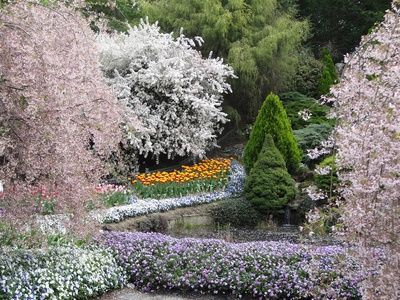
Foster’s Tulip
One of the largest wild tulips, with huge, brilliant scarlet flowers and a distinct black, yellow-bordered base. It is a major ancestor of the popular ‘Darwin Hybrid’ tulips. Finding this giant in the wild is a breathtaking sight for any traveler.
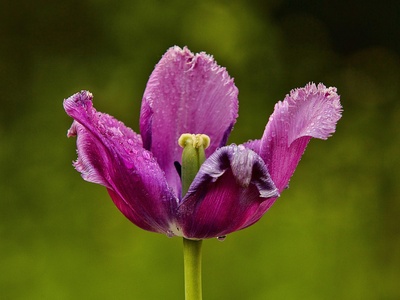
Vicar’s Iris
This beautiful Juno iris features pale blue to lilac flowers with a yellow crest. It grows from a bulb and often forms small clusters. Look for its distinctive, channelled leaves arranged in a fan shape on the lower mountain slopes in early spring.
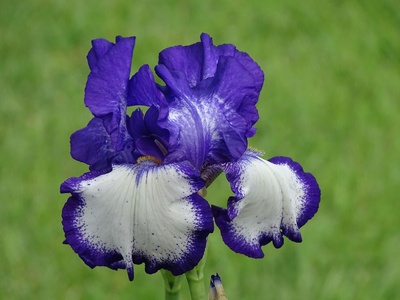
Willmott’s Iris
A stunning Juno iris with striking sky-blue or deep violet-blue flowers, each marked with a white and yellow crest. Its delicate beauty and vibrant color make it a prized find for photographers and plant enthusiasts exploring the mid-altitude mountain zones.
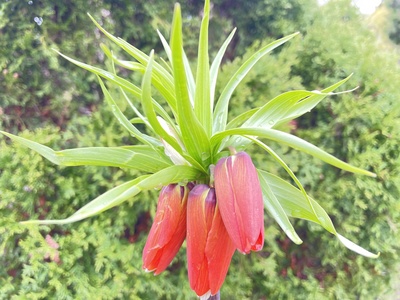
Crown Imperial
A spectacular plant with a tall, robust stem topped by a whorl of large, nodding, orange-red bell-shaped flowers. It stands out dramatically on mountain slopes. This majestic fritillary is a true icon of the Tajik spring floral display.
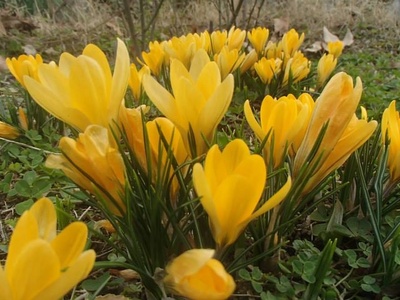
Korolkow’s Crocus
One of the first signs of spring, this crocus pushes up through the last of the snow. Its bright yellow-orange flowers bring vibrant color to the landscape. Look for it in grassy areas in lower mountain zones as winter recedes.
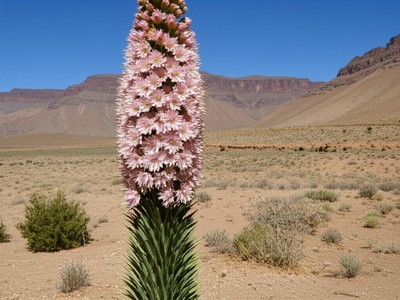
Giant Foxtail Lily
An unbelievably dramatic plant, sending up a towering flower spike that can reach 3 meters. The spike is densely packed with hundreds of star-shaped, pinkish-white flowers, creating a magnificent spectacle in the semi-desert landscape. A true giant of the flower world.
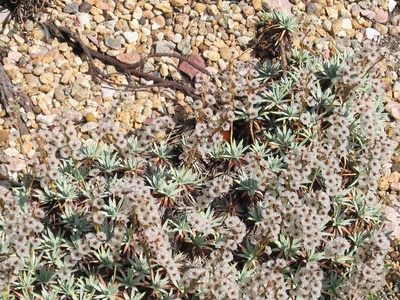
Prickly Thrift
Forms dense, spiny, dome-shaped cushions that can be over a meter wide. In summer, these cushions are covered in a profusion of tiny, delicate pink or white flowers on short stems, creating a beautiful contrast between the soft blooms and sharp leaves.
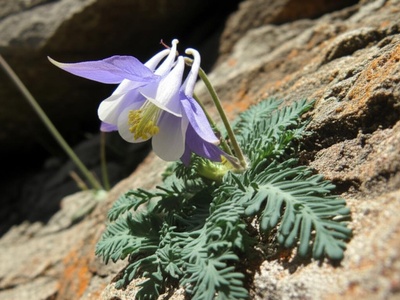
Pamir Columbine
A delicate alpine gem found in the harshest environments. It grows from tight rock fissures, producing fern-like blue-green foliage and exquisite, nodding, cup-shaped flowers in shades of pale blue, lilac, or white. A prized sight for high-mountain trekkers.
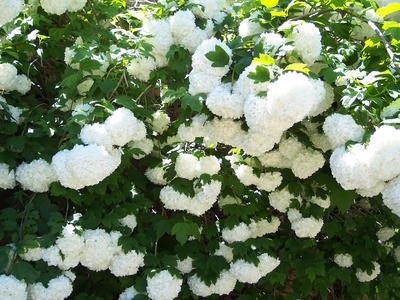
Snowball Plant
An extraordinary high-altitude plant forming a dense, woolly ball to protect its small purple flowers from the cold. This “vegetable sheep” is a unique adaptation to the harsh Pamir environment and a must-see for high-mountain trekkers and photographers.
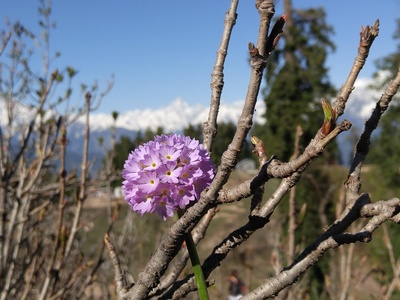
Drumstick Primrose
This distinctive primrose features a globe-like head of deep violet-blue, tightly packed flowers atop a leafless stem dusted with a white powder (farina). It often grows in groups in damp, high-altitude meadows, creating beautiful patches of intense color.
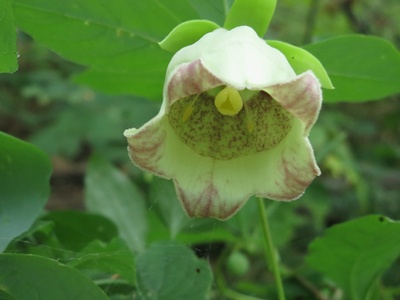
Bonnet Bellflower
A curious flower with pale blue, bell-shaped blooms that have intricate orange and dark purple markings inside. The flower has a distinctive, slightly unpleasant foxy smell. It’s a fascinating plant to inspect up close in subalpine meadows.
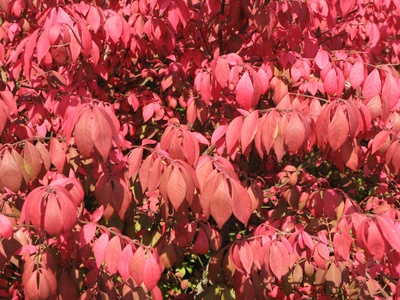
Burning Bush
Known for its beautiful spikes of white or pink orchid-like flowers. The plant is covered in glands that release a flammable, aromatic oil. On a hot, still day, this vapor can be ignited, producing a brief flash of light without harming the plant.
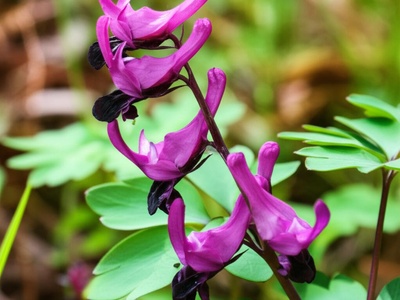
Ledebour’s Corydalis
An unusual but beautiful early spring flower with pinkish-purple, spurred outer petals and dark, almost black, inner petals. It emerges quickly after the snow melts, often forming carpets of color on the forest floor or open slopes.
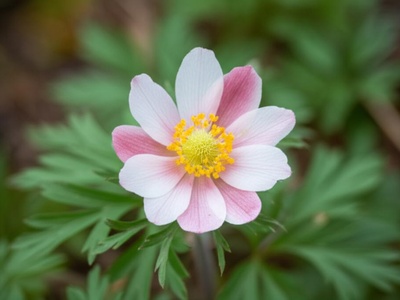
Pamir Anemone
A lovely spring windflower with large, solitary white or pink-tinged flowers held above finely divided, ferny leaves. It’s a cheerful sight in the mountain meadows as they come to life after the winter snows have melted.
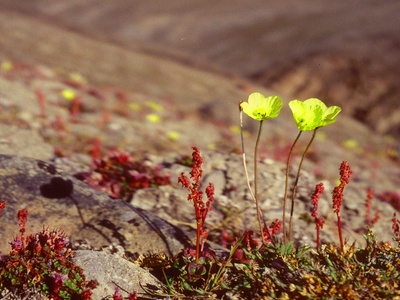
Arctic Poppy
A hardy alpine poppy with delicate, crinkled petals in shades of bright yellow, orange, or white. It thrives in the harsh, cold conditions of the high Pamirs, its cheerful flowers a stark contrast to the barren, rocky landscape.
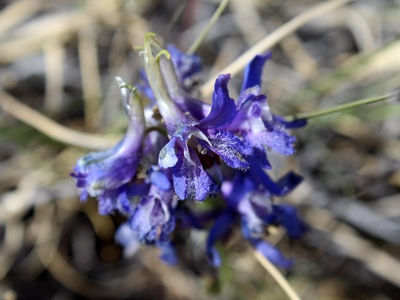
Mountain Larkspur
This striking plant produces tall spires of intense, deep blue or violet flowers, a characteristic sight in high-altitude summer meadows. The individual flowers have a distinct spur at the back, typical of larkspurs. Its rich color is a magnet for photographers.
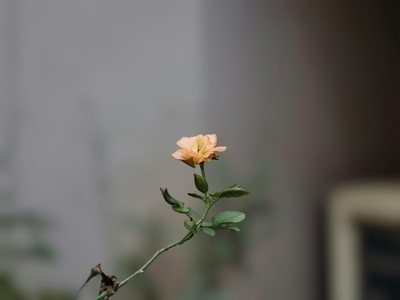
Kokan Rose
A native wild rose of Central Asia, forming a dense, thorny shrub. It produces beautiful, single, bright yellow flowers that are often highly fragrant. It’s a tough and resilient plant, perfectly adapted to the region’s dry, sunny climate.
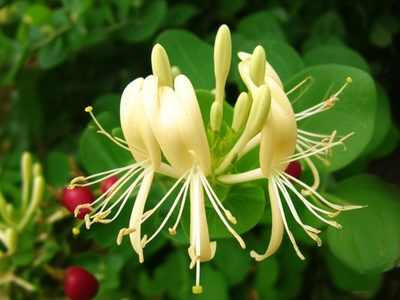
Coinleaf Honeysuckle
A climbing or sprawling shrub with distinctive, rounded, coin-like leaves. It produces pairs of fragrant, creamy-white or yellowish flowers that are a valuable nectar source for insects. The flowers are followed by bright red berries later in the season.
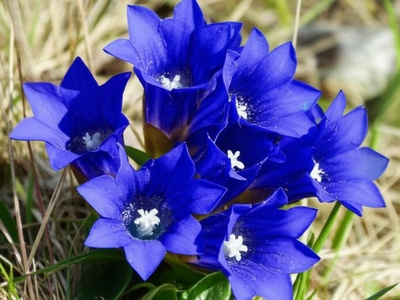
Olivier’s Gentian
Unlike the typical alpine gentians, this species thrives in drier, lower-altitude environments. It produces clusters of trumpet-shaped, brilliant blue flowers that open in the sun. It’s a splash of intense color in the spring steppe landscape.
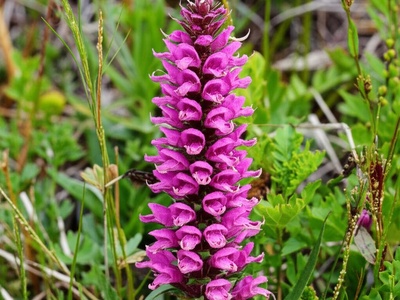
Olga’s Lousewort
A showy and unusual-looking plant with dense spikes of pink to purplish flowers. Each flower has a distinctive, long, curved beak or hood, a characteristic feature of the lousewort genus. They are semi-parasitic on the roots of other plants.
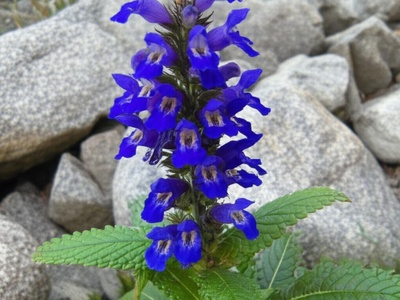
Immaculate Skullcap
A beautiful member of the mint family, this plant produces spikes of large, hooded, violet-blue flowers. It grows in clumps and its vibrant blooms stand out against the grey rock of its preferred habitat. A wonderful find in mid-to-high altitude zones.
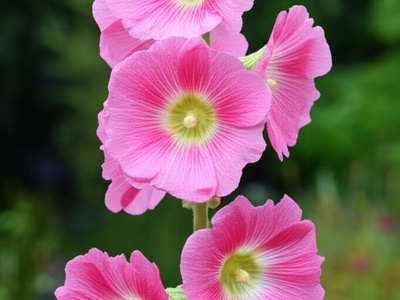
Naked-stemmed Hollyhock
A tall, stately plant with very large, saucer-shaped flowers in shades of pink, rose, or white. As the name suggests, the upper part of the flowering stem often has few leaves, showcasing the impressive blooms. A common and beautiful summer flower.
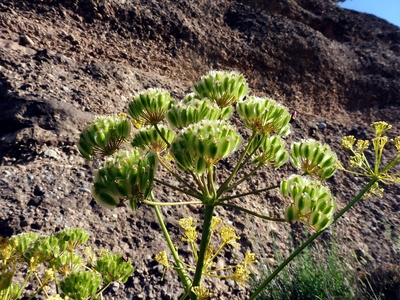
Giant Fennel
A massive herbaceous plant, easily reaching over 2 meters tall. It produces huge, umbrella-like heads (umbels) of tiny yellow flowers. Its architectural form makes a dramatic statement in the landscape, even after the flowers have faded.
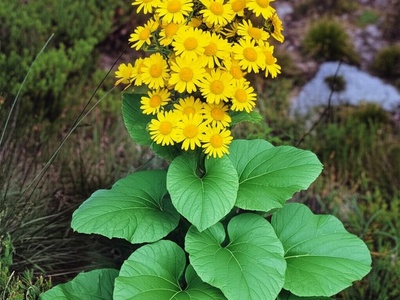
Thomson’s Leopard Plant
A robust plant with large, heart-shaped basal leaves. It sends up a tall spike crowded with bright, sunny yellow, daisy-like flowers. It’s a conspicuous and cheerful sight in wet, high-altitude environments during the summer months.
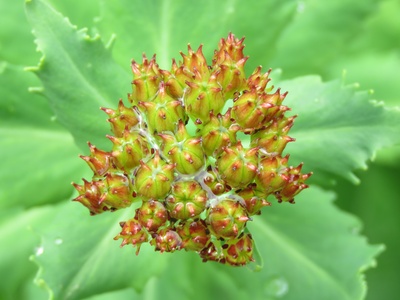
Toothed Rhodiola
A succulent plant forming clumps of fleshy, blue-green, toothed leaves. It produces dense, flattish heads of small, star-like flowers, which can be reddish or yellowish-green. It is a hardy plant adapted to the extreme conditions of the high mountains.
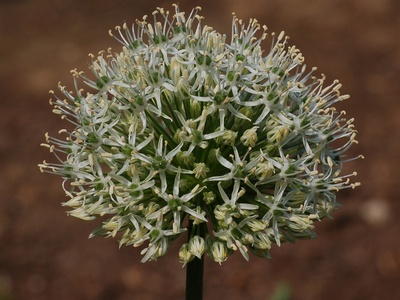
Persian Shallot
A wild onion with a striking, large, spherical head of densely packed, star-shaped, pinkish-purple flowers on a tall, leafless stalk. It’s both an ornamental marvel and a widely used culinary plant, often harvested from the wild.
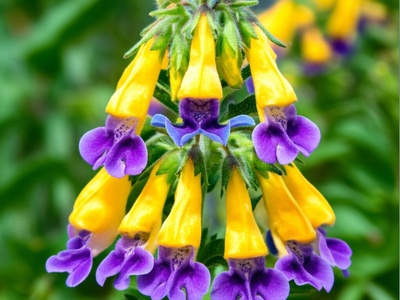
Two-coloured Golden Drops
A bristly-haired plant that produces clusters of tubular, bell-shaped, nodding flowers. The flowers are notable for changing color as they age, starting as yellow and turning to shades of violet or blue, creating a beautiful two-toned effect.
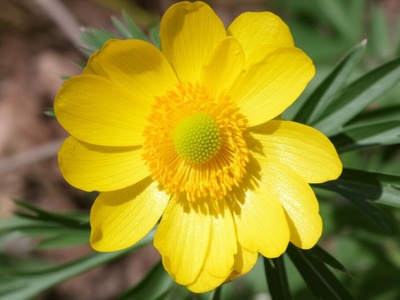
Tien Shan Pheasant’s Eye
A beautiful alpine flower with large, buttercup-like, glossy yellow flowers and feathery, finely-divided leaves. It often blooms in great numbers, creating golden carpets in high mountain pastures during the late spring and early summer.
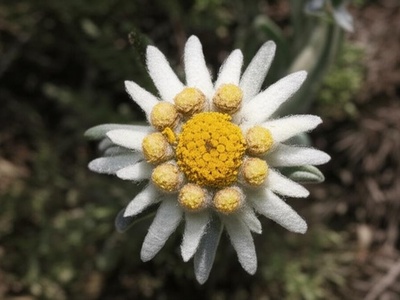
Yellowish Edelweiss
A relative of the famous alpine Edelweiss, this species is adapted to the drier conditions of Central Asia. It features characteristic star-shaped flowerheads made of woolly bracts, which are typically pale yellow or cream-colored, surrounding the tiny central flowers.
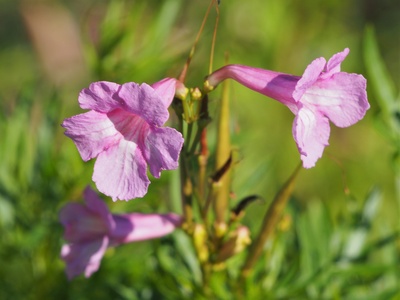
Olga’s Incarvillea
A stunning plant with tall, elegant spires of large, trumpet-shaped, bright pink flowers. It has finely cut, fern-like leaves at its base. Its showy blooms make it one of the most beautiful and sought-after plants for photographers in the region.
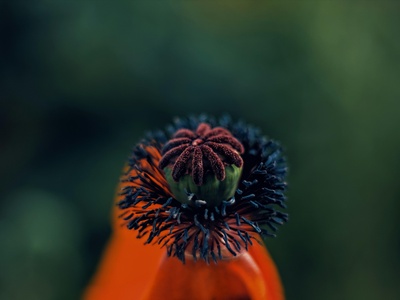
Elegant Horned Poppy
A delicate-looking poppy with finely divided, grey-green leaves and vibrant orange or reddish flowers with a dark spot at the base of each petal. The plant gets its name from the very long, thin, horn-like seed pod that develops after flowering.

Siberian Lily
Despite its common name, this is not a true lily. It produces loose clusters of beautiful, trumpet-shaped, violet-blue flowers on slender stems. It’s a graceful and elegant flower that brings a splash of cool color to dry landscapes in the spring.
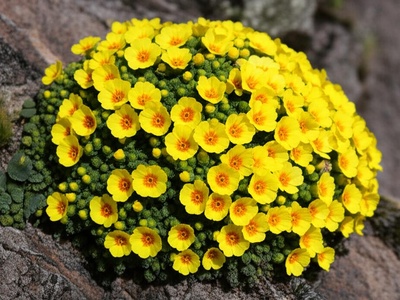
Pamir Dionysia
A rare and beautiful cushion plant, forming tight domes of small, green rosettes. In spring, it becomes covered in bright yellow, primrose-like flowers with a small orange eye. Finding this specialist of vertical cliffs is a reward for dedicated botanists.
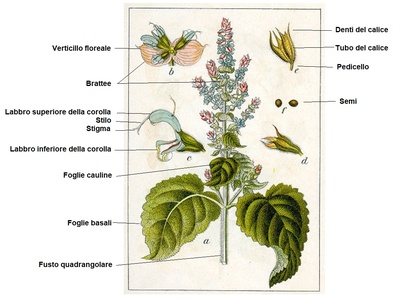
Clary Sage
A tall, aromatic biennial with large, hairy leaves and impressive spikes of pale lilac or whitish flowers held in large, papery, pinkish bracts. It is widely cultivated for its essential oil but also grows wild, perfuming the air on hot summer days.
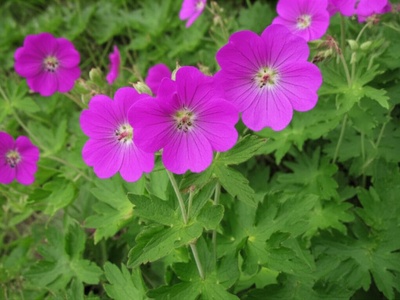
Regel’s Geranium
A robust wild geranium that forms clumps of deeply divided leaves. It produces abundant, large, upward-facing, cup-shaped flowers of a striking purplish-pink or magenta color. It adds a bold splash of color to high-altitude summer pastures.
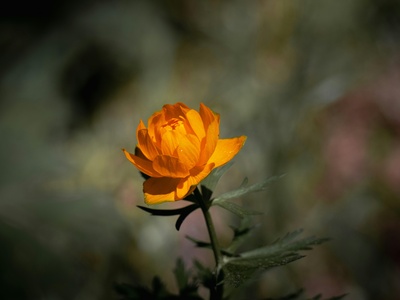
Altai Globeflower
A stunning flower with large, globular blooms made of waxy, deep orange or golden-yellow sepals that resemble a buttercup on a grand scale. It thrives in damp mountain meadows, often growing in large groups that create a spectacular display.
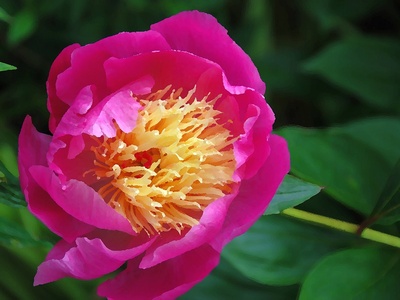
Intermediate Peony
A wild peony with large, bowl-shaped flowers of a brilliant magenta or deep pink, surrounding a central boss of golden-yellow stamens. It is a truly magnificent sight, though often found in scattered, small populations. It is a protected and highly cherished species.
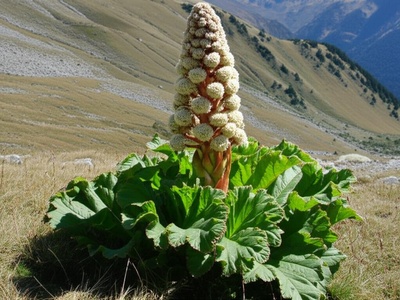
Maximowicz’s Rhubarb
A wild rhubarb with large, leathery, rounded leaves. It produces a thick, tall flower stalk with a dense, conical plume of creamy-white or pinkish flowers. Its bold, architectural form is a dramatic feature of the mountain landscape, especially on barren slopes.
